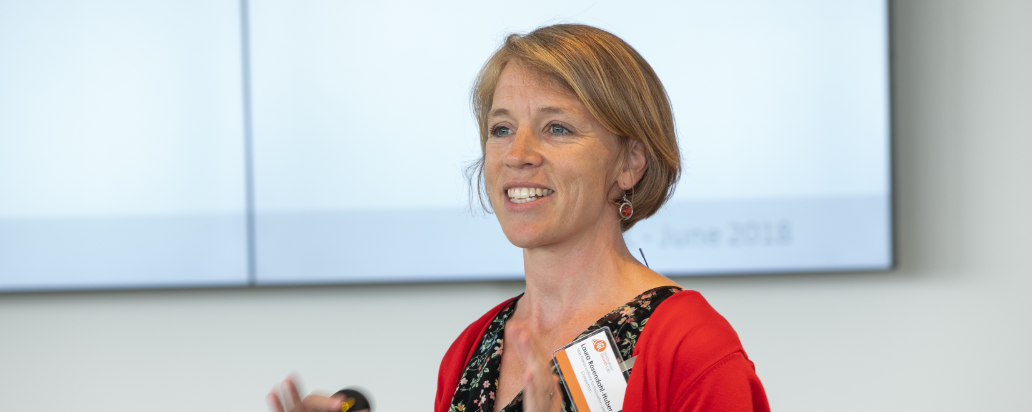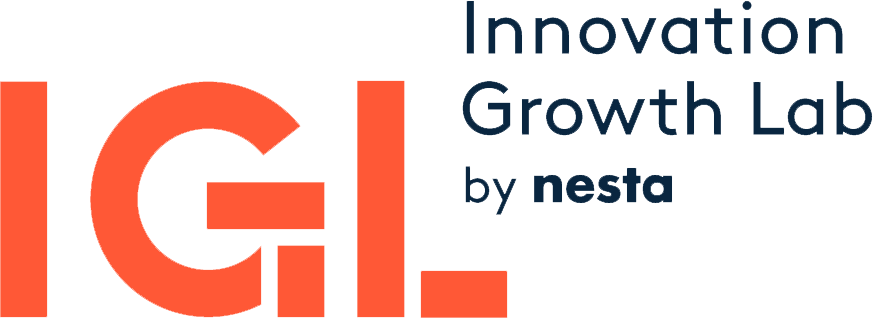
It was a privilege to attend the 2018 Innovation Growth Lab Conference (IGL2018) that took place at the Harvard Business School and MIT campuses from the 12-14 of June. The experience was — in a word — inspiring. The calibre of people and organisations in attendance as well as the quality of the work presented made it difficult to focus on one aspect to write about. However, one number kept coming back to me as I reflected on the experience — 118 years. In the field of innovation, such a time scale seems unfathomably long. So what is it referring to?
Source: Who becomes an inventor in America? Presented at IGL by John Van Reenen (slides)
The figure above shows one of the many fascinating (albeit somewhat disheartening) findings from The Equality of Opportunity Project, presented at IGL2018 by MIT’s Sloan School of Management Professor of Applied Economics, John Van Reenen. The trend line just barely shows an upward trajectory, reflecting an average rate of change of 0.27% per year in female inventorship (as measured by granted patents) starting from a 1940 birth cohort. At this rate, it will take 118 years to reach a 50% female share of inventorship. This is striking, and in the panel session that followed the presentation of these results, Nesta’s Executive Director of Research, Analysis and Policy Kirsten Bound emphasised that we must find a way to close the gap sooner.
The trend line just barely shows an upward trajectory, reflecting an average rate of change of 0.27% per year in female inventorship (as measured by granted patents) starting from a 1940 birth cohort. At this rate, it will take 118 years to reach a 50% female share of inventorship.
Against this backdrop, it was therefore highly encouraging to see several presentations at IGL2018 with either a central or peripheral focus on gender in research and innovation (R&I). Some findings I thought were particularly interesting include:
-
In an experiment conducted with undergraduate students in Germany, female entrepreneurial role models positively influenced female students’ self-efficacy and attitudes toward entrepreneurship. Source: Yes I Can! – A Field Experiment on Female Role Models in Entrepreneurship by Laura Bechthold and Laura Rosendahl-Huber (Max Planck Institute for Innovation and Competition).
-
In an experiment exploring the effects of peer pressure in the academic review process, 277 US medical school faculty (76% from Harvard) reviewed short biomedical grant proposals and a subset were then provided with information on how their peers graded the proposals. After adjusting for confounders, women were 10.5% (p = 0.053) more likely to adjust proposal scores than men when presented with new information. Source: How Social Influence Affects Expert Judgment by Misha Teplitskiy (Laboratory for Innovation Science Harvard), Eva Guinan (Harvard Medical School) and Karim Lakhani (Harvard Business School).
I was also encouraged to see a number of prominent women chairing and participating in panels and other sessions at the conference, including Kirsten Bound (Nesta), Eva Camerer (Innovation Norway), Katy Börner (Indiana University), and Sarah Weisberg (BioBus USA).
Gender equality in R&I: a backstory
Since 2014, the topic of gender equality in R&I has held a special place in my heart and mind. That was the year I started working on a two-year study for the European Commission’s Directorate General for R&I entitled She Figures 2015. The study is conducted every three years and examines the gender balance across the R&I landscape in Europe, spanning from the pool of graduate talent, to labour market participation of researchers, to R&I outputs.
It was here that I first learned of the ‘leaky pipeline’ in women’s research career progression — whereby despite a nearly equal proportion of men and women PhD graduates* across all fields of study combined in Europe, women ‘leak out’ of the academic career pipeline, holding only 21% of the highest level of academic positions** (2013 data). The situation is even more dire in science and engineering, where only 31% of PhD graduates and 13% of top academic posts were held by women in 2013. Rates of inventorship across the EU-28 were also grim, with only 8.9% of patent applications registered to a woman between 2010-2013.
There is clearly a great deal of work to be done if we want to see an equal representation of women and men in R&I, and an important part of the equation is ensuring that we have the right data to inform and evaluate policies and programmes.
Future directions in mapping gender equality in the R&I landscape?
Since joining Nesta’s Innovation Mapping team earlier this year, I’ve been reflecting on how the data and methods we use might contribute to furthering the study of gender equality in R&I. Below are two such ideas:
-
Exploring gender balance in tech networking using Meetup data: In Arloesiadur — a collaborative project with the Welsh Government — Nesta’s Innovation Mapping team used natural language processing and graph theory to analyse Meetup data, exploring trends in tech networking, the structure of the tech community, and changes in the tech networks over time. The findings were compelling — for example, tech networking in Wales grew rapidly from 2012 onward, with interest in applied data science growing steadily and software and business development Meetups having attracted 75% of participants. But what story would these data tell if they were disaggregated by gender? Would we find that women are less likely to participate in tech Meetups than men? There is some reason to suspect this may be the case. For instance, Meetups are often held in the evenings or on weekends when childbearing or other domestic responsibilities — which in the UK and many other countries continue to be disproportionately borne by women — may hinder participation. Such findings could prompt Meetup communities serious about increasing the participation of women in tech to consider, for instance, using a portion of the pizza and beer budget to offer childcare (some men would likely take advantage of this as well!).
-
Real-time measurement of the gender gap in academia using web data: If you were reading the ‘backstory’ section of this blog closely, you will have noticed that the ‘leaky pipeline’ data in She Figures 2015 study is from 2013. This is because these data have historically been collected through an Excel-based survey tool distributed through national representatives in each country. During the time that I was involved in the She Figures study, we allowed 4-6 months for data collection and still needed to chase a few people for being late (although I won’t name names). Such a lag complicates efforts to monitor the impact of policies and programmes aimed at improving gender equality amongst academics. Fast forward to a few months ago, when our team at Nesta was brainstorming which pilots to carry out for our report on the future incorporation of big data into the European Innovation Scoreboard. One of the pilots we landed on in collaboration with consortium members at the European Commission was to scrape university websites and use natural language processing in order to develop estimates of skill supply in Europe. It would be interesting to run a pilot on scraping university staff websites to obtain estimates of gender equality, validating these against the results in more established data sources. If viable, this approach could potentially provide a real-time (or nearly so) indication of the gender balance within higher education institutions across Europe and potentially more widely as well.
Where do you think the evidence gaps are in gender equality in R&I? How do you think we could apply novel innovation mapping techniques and leverage new types of data to explore these? Don’t hesitate to get in touch with questions, comments and ideas!
* ISCED 6 classification, which in most countries relates to a PhD.
** In most countries, tenured professorship
